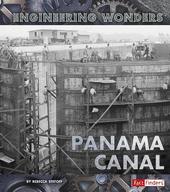
|
Panama Canal (Engineering Wonders)
Paperback / softback
Main Details
| Title |
Panama Canal (Engineering Wonders)
|
| Authors and Contributors |
By (author) Rebecca Stefoff
|
| Physical Properties |
| Format:Paperback / softback | | Pages:32 |
|
| ISBN/Barcode |
9781491482025
|
| Classifications | Dewey:627.13097287 |
|---|
| Audience | |
|---|
| Illustrations |
Illustrations, color
|
|
Publishing Details |
| Publisher |
Capstone Press
|
| Imprint |
Capstone Press
|
| Publication Date |
1 January 2016 |
| Publication Country |
United States
|
Description
This title explores and explains how the Panama Canal was built. The canal's construction is described in terms of the engineering process. The book explores why the canal was built and describes the design stages and technologies used during construction. The book also describes the challenges builders faced while building the canal.
Author Biography
Rebecca Stefoff has published many books for young readers about science, technology, and engineering. For Marshall Cavendish/Benchmark's Great Inventions series (2006-2003), she wrote six titles, including The Telephone, Microscopes and Telescopes, and Robots. She introduced fifth-grade readers to the scientific method in the six-volume series Is It Science? (Cavendish Square, 2014), which includes, Astrology and Astronomy, Alchemy and Chemistry, and Magic and Medicine. Her six volume series Great Engineering, for second- and third-grade readers, is forthcoming from Cavendish Square and has books on building bridges, dams, skyscrapers, and more. Stefoffis especially happy to be writing about the building of the Panama Canal for the Engineering Wonders series because she has seen the canal firsthand. While celebrating her parents' fiftieth wedding anniversary on a cruise ship, she passed through the canal and witnessed the extraordinary engineering marvels that are its locks. She has been interested in the Panama Canal (and other canals) ever since.
ReviewsIn a welcome change from the normal series approach, these titles place each featured structure into the context of its natural and cultural environments while discussing how it reflects the society that built it. Authors explain engineering concepts, challenges, and construction processes so clearly that readers will understand how engineers overcame seemingly impossible problems to design and build these magnificent structures. . . .Good choice to introduce landmark structures and the engineering that made them possible.-- "School Library Journal"
|